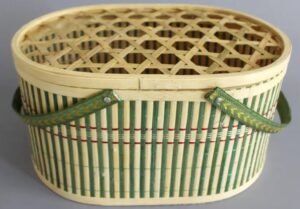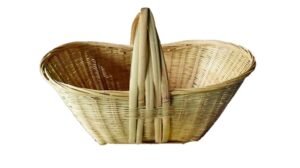Bamboo handicrafts have been an integral part of various cultures around the world, particularly in Asia. These crafts are not just about aesthetic appeal; they represent sustainability and ecological balance. Bamboo is a fast-growing plant, making it an environmentally friendly resource, which is increasingly important in today’s world. The intricacies of bamboo handicrafts showcase the rich heritage of craftsmanship while promoting a sustainable lifestyle. This article will explore the significance, benefits, and unique creations of bamboo handicrafts by presenting various aspects through several captivating subheadings.

1. The History of Bamboo Handicrafts
Bamboo has been utilized for centuries, especially in Asian cultures. Its strength and flexibility have made it a perfect material for creating various items from furniture to tools. Understanding the history of bamboo handicrafts provides insight into how these practices have evolved over time.
2. Why Choose Bamboo?
Bamboo is renowned for its sustainability. It grows rapidly, requires minimal resources, and absorbs carbon dioxide more efficiently than trees. This makes bamboo an eco-friendly alternative to conventional materials.
3. The Crafting Process of Bamboo Handicrafts
Crafting bamboo products involves several steps, from selecting the right bamboo species to cutting and shaping it. Artisans often employ traditional methods passed down through generations, ensuring that each piece is unique.
4. Cultural Significance of Bamboo Handicrafts
In many cultures, bamboo handicrafts symbolize community and connection. They are often used in rituals and celebrations, highlighting the importance of tradition in contemporary life.
5. Types of Bamboo Products
Bamboo offers endless possibilities for craftsmanship. Some popular products include:
- Bamboo Furniture: Sturdy and stylish, bamboo furniture is both functional and durable.
- Bamboo Utensils: Eco-friendly alternatives to plastic, bamboo utensils are safe and sustainable.
- Bamboo Decor: Decorative items like wall hangings and sculptures add a unique aesthetic to any space.
6. Advantages of Bamboo Handicrafts
There are several advantages to choosing bamboo handicrafts, including:
- Durability: Bamboo is known for its strength, making items last longer.
- Lightweight: Products made from bamboo are easy to handle and transport.
- Natural Aesthetic: The natural look and feel of bamboo bring warmth and charm to any environment.
7. Eco-Friendly Practices in Bamboo Crafting
Modern artisans are increasingly focusing on sustainable practices, ensuring minimal environmental impact. This includes responsible harvesting and using non-toxic finishes.
8. The Future of Bamboo Handicrafts
As awareness of environmental issues grows, the demand for bamboo handicrafts is expected to rise. More artisans are exploring innovative designs, blending tradition with modern aesthetics.
9. Bamboo Handicrafts Around the World

Different regions have unique approaches to bamboo crafting. For instance, Southeast Asia is famous for its intricate weaving techniques, while in Japan, bamboo has been used in various crafts for centuries.
10. Educational Programs on Bamboo Crafting
Many communities offer workshops and educational programs to promote bamboo craftsmanship. These initiatives not only empower local artisans but also educate participants about sustainability.
11. Supporting Local Artisans
Purchasing bamboo handicrafts directly supports local artisans and helps to preserve traditional skills. This fosters community growth and sustainability.
12. Gift Ideas Using Bamboo Handicrafts
Bamboo handicrafts make for thoughtful, eco-friendly gifts. Items like personalized bamboo mugs or handmade baskets show care for both the recipient and the planet.
13. How to Care for Bamboo Handicrafts
To prolong the life of bamboo products, it’s essential to follow proper care instructions, such as avoiding direct sunlight and moisture to prevent warping.
14. DIY Bamboo Projects
For the crafty individual, DIY bamboo projects can be a fun way to get involved. Simple projects like creating plant holders or decorative items can enhance any space.
15. Bamboo in Home Decor
Using bamboo in home decor is increasingly popular. Its natural aesthetic complements various design styles, from rustic to modern.
16. The Role of Bamboo in Sustainable Living
Embracing bamboo handicrafts is a step towards sustainable living. By choosing bamboo, consumers can contribute to reducing plastic waste and supporting eco-friendly practices.
17. Challenges Facing Bamboo Artisans
Despite its advantages, bamboo artisans face challenges, including competition from cheaper, mass-produced items and climate change affecting bamboo growth.
18. Bamboo Handicraft Exhibitions
Art exhibitions featuring bamboo handicrafts showcase the versatility and beauty of this material. These events often highlight the skills of local artisans and promote cultural exchange.
19. Popular Bamboo Festivals
Various festivals around the world celebrate bamboo culture. These events include workshops, performances, and exhibitions, drawing attention to the significance of bamboo in local traditions.

Leave a Reply